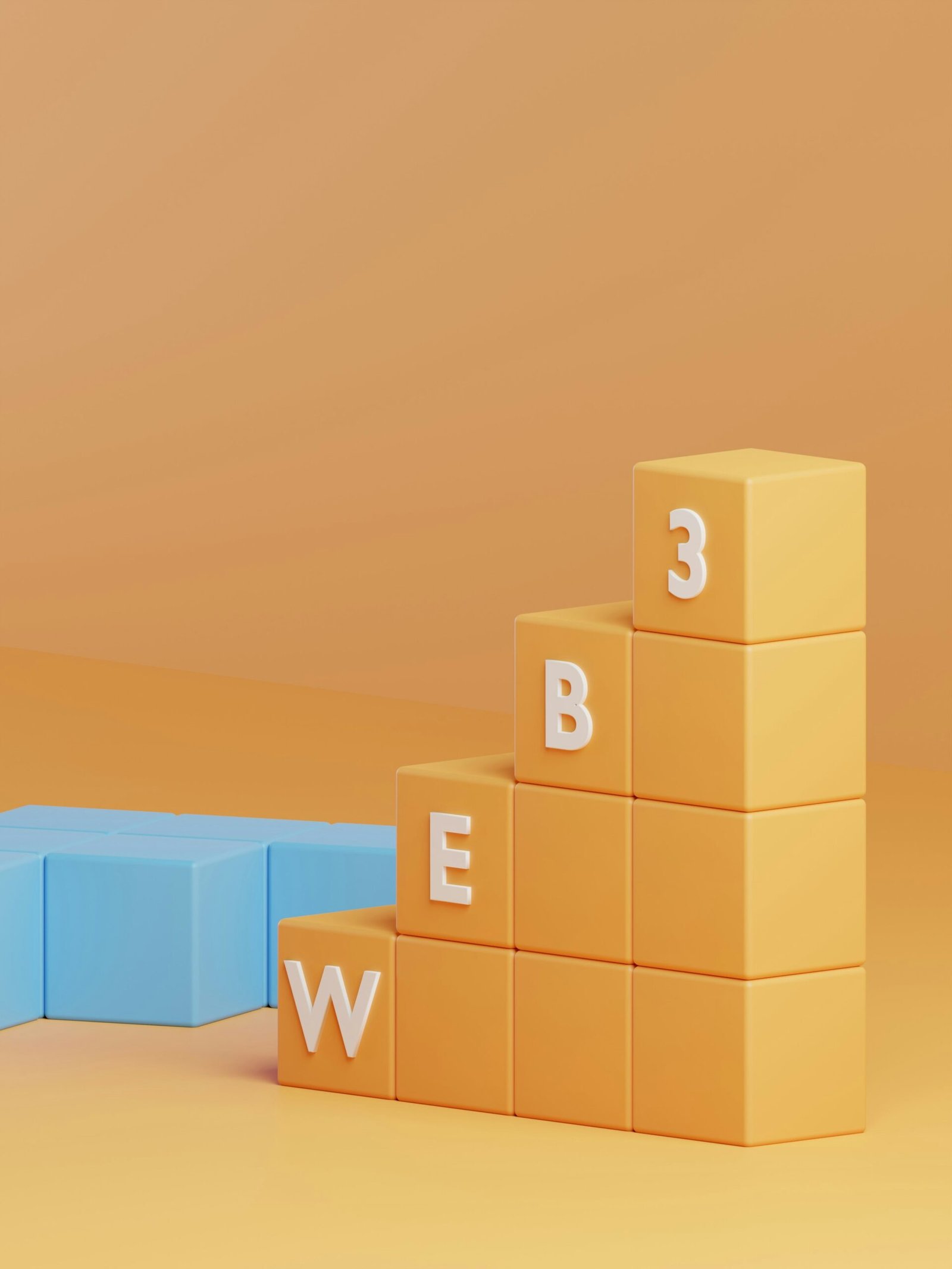Understanding Blockchain Technology for Beginners
Introduction to Blockchain Technology
Blockchain technology has rapidly emerged as a transformative force in various industries, capturing the interest of technologists, businesses, and government entities alike. At its core, a blockchain is a decentralized ledger that records transactions across multiple computers to ensure the integrity and transparency of data. This innovative system eliminates the need for intermediaries, offering a more secure and efficient method of managing digital transactions.
The origin of blockchain technology can be traced back to 2008, when an individual or group known as Satoshi Nakamoto introduced it as the underlying technology for Bitcoin. Initially designed to support the first cryptocurrency, blockchain’s unique properties have since been recognized for their potential across a wide range of applications. Its decentralized nature means that no single entity has control over the entire network, which significantly reduces the risk of fraud and data tampering.
A blockchain functions by grouping transactions into blocks, which are then linked together in chronological order to form a chain. Each block contains a list of transactions, a timestamp, and a cryptographic hash of the previous block. This structure ensures that once a transaction is recorded, it cannot be altered without changing all subsequent blocks, making the blockchain highly secure and immutable.
The initial application of blockchain technology in Bitcoin demonstrated its capability to revolutionize the financial sector by providing a transparent and secure way to transfer value without the need for a central authority. However, the potential of blockchain extends far beyond cryptocurrencies. Today, it is being explored for use in supply chain management, healthcare, voting systems, and more, promising to enhance the efficiency and security of various processes.
As we delve deeper into the intricacies of blockchain technology, it is crucial to understand these foundational principles. By grasping the basics of how blockchain operates as a decentralized ledger, beginners can better appreciate its significance and the myriad possibilities it offers for the future.
How Blockchain Works
Blockchain technology operates on a decentralized network that maintains a continuously growing list of records, known as blocks, which are linked using cryptographic hashes. Each block contains a number of transactions, a timestamp, and a reference to the previous block, forming a chain. This interconnected structure ensures the integrity and security of the data stored within the blockchain.
When a new transaction is initiated, it must be verified by the network. This verification process involves a consensus mechanism, where multiple participants in the network, called nodes, agree on the validity of the transaction. Once verified, the transaction is grouped with other transactions into a new block. This block then undergoes a process to be added to the existing blockchain.
One common consensus mechanism is Proof of Work (PoW). In PoW, nodes, also known as miners, compete to solve complex mathematical problems. The first miner to solve the problem gets to add the new block to the blockchain and is rewarded with cryptocurrency. This process is energy-intensive and requires significant computational power, ensuring that adding a new block is not an easy task, which enhances the security of the blockchain.
Another consensus mechanism is Proof of Stake (PoS). In PoS, validators are chosen to create new blocks and validate transactions based on the number of coins they hold and are willing to “stake” as collateral. This method is less energy-intensive compared to PoW and aims to reduce the environmental impact of blockchain operations while still maintaining security through economic incentives.
Data stored on the blockchain is decentralized, meaning it is distributed across multiple nodes rather than being held in a single, central location. This decentralization ensures that the data is resilient to tampering and hacking, as altering any single piece of information would require altering the data on a majority of the nodes simultaneously—a feat that is practically impossible.
Understanding these fundamental aspects of blockchain technology—its structure, the role of blocks and chains, and the various consensus mechanisms—provides a foundational insight into how this innovative technology operates.
Key Features of Blockchain
Blockchain technology stands out due to a set of distinctive features that fundamentally differentiate it from traditional centralized systems. These features contribute to blockchain’s increasing adoption across various industries. The primary attributes of blockchain technology include decentralization, immutability, transparency, and security.
Decentralization
Decentralization is one of the most significant features of blockchain. Unlike traditional centralized systems where a single entity controls the database, blockchain operates on a peer-to-peer network. Every participant, or node, in the network has access to the entire database and its complete history. This ensures that no single point of failure can disrupt the system. For example, in cryptocurrency networks like Bitcoin, decentralization eliminates the need for intermediaries such as banks, enabling direct transactions between users.
Immutability
Immutability refers to the unchangeable nature of blockchain records. Once a transaction is recorded on a blockchain, it cannot be altered or deleted. This feature is achieved through cryptographic hashing and consensus mechanisms that validate and lock each block in place. Immutability ensures data integrity and trustworthiness. For instance, in supply chain management, blockchain’s immutability can provide an unalterable record of product origins, ensuring authenticity and preventing fraud.
Transparency
Blockchain’s transparency is another pivotal feature. Every transaction recorded on a blockchain is visible to all participants in the network. This level of transparency ensures accountability and reduces the potential for corruption. For example, in the context of public elections, a blockchain-based voting system can offer transparent and verifiable results, enhancing trust in the electoral process.
Security
Security in blockchain is achieved through cryptographic techniques and consensus algorithms. Each block is linked to the previous block via a cryptographic hash, forming a secure chain of blocks. Additionally, consensus mechanisms like Proof of Work (PoW) or Proof of Stake (PoS) ensure that all participants agree on the validity of transactions. This robust security framework makes blockchain highly resistant to tampering and cyber-attacks. For example, in the financial sector, blockchain technology can safeguard sensitive data and reduce the risk of data breaches.
These key features—decentralization, immutability, transparency, and security—make blockchain a revolutionary technology with the potential to transform various industries. Understanding these attributes is crucial for anyone seeking to grasp the fundamentals of blockchain technology.
Types of Blockchains
Blockchain technology, often synonymous with cryptocurrencies like Bitcoin, extends beyond digital currencies into various types of blockchains. Understanding these different types—public, private, and consortium blockchains—can empower users to identify the most suitable blockchain model for their specific needs.
Public Blockchains: These are decentralized networks accessible to anyone. Public blockchains are characterized by transparency and security, making them ideal for applications requiring open and immutable records. Bitcoin and Ethereum are prime examples, where transactions are publicly visible but pseudonymous. Their primary advantage is the high level of security due to widespread participation in the network. However, the decentralized nature and large volumes can lead to slower transaction speeds and higher costs.
Private Blockchains: In contrast, private blockchains are restricted to a specific group of participants. These networks are often utilized by organizations needing to maintain confidentiality while leveraging blockchain’s benefits. For example, Hyperledger Fabric is a private blockchain used in industries like banking and supply chain management. The advantages of private blockchains include enhanced privacy, faster transaction speeds, and reduced costs. The downside, however, is a higher vulnerability to centralization risks due to limited participation.
Consortium Blockchains: Consortium blockchains, or federated blockchains, represent a hybrid model where multiple organizations manage the blockchain network. This type balances the decentralization of public blockchains with the controlled access of private blockchains. A notable example is the R3 Corda platform, used in financial services to facilitate secure and efficient transactions among member institutions. Consortium blockchains offer greater security and efficiency over public blockchains while maintaining some level of decentralization. However, they can be complex to set up and manage, requiring consensus among multiple entities.
In conclusion, each type of blockchain—public, private, and consortium—comes with distinct characteristics, advantages, and disadvantages. Selecting the appropriate blockchain model depends on the specific requirements and goals of the application, whether it is open access, enhanced privacy, or a balance of both.
Blockchain Applications Beyond Cryptocurrencies
Blockchain technology, while often synonymous with cryptocurrencies, extends far beyond the realm of digital currencies. Its potential applications span numerous industries, promising to revolutionize various sectors by introducing efficiencies and solving existing problems. One such industry is supply chain management. Traditionally plagued by inefficiencies and lack of transparency, supply chain operations can greatly benefit from blockchain’s immutable ledger. By recording each step of a product’s journey on a blockchain, companies can ensure traceability, prevent fraud, and enhance trust amongst stakeholders.
In healthcare, blockchain technology can address critical issues related to patient data management. The current systems often suffer from data breaches and interoperability challenges. Blockchain introduces a secure, decentralized way to store and share medical records, ensuring that patient data is accessible to authorized personnel while maintaining privacy. This can lead to improved patient outcomes and streamlined administrative processes.
The financial sector, already familiar with the concept of blockchain through cryptocurrencies, can leverage the technology for a myriad of other purposes. Blockchain can facilitate faster and more secure transactions, reducing the need for intermediaries and lowering costs. Additionally, smart contracts—self-executing contracts with the terms directly written into code—can automate various financial processes, increasing efficiency and reducing the potential for human error.
Another promising application of blockchain is in voting systems. The integrity of electoral processes is critical for democratic societies, yet traditional voting systems are susceptible to fraud and manipulation. Blockchain can provide a transparent and tamper-proof platform for casting and counting votes, enhancing trust in the electoral process. Each vote can be securely recorded on the blockchain, ensuring that it is immutable and verifiable.
These examples underscore the versatility and potential of blockchain technology. From enhancing supply chain transparency to securing patient data, streamlining financial transactions, and ensuring fair elections, blockchain is poised to bring transformative changes across various industries. As technology continues to evolve, its applications are likely to expand, offering new solutions to longstanding challenges.
Challenges and Limitations of Blockchain
Blockchain technology, often heralded for its potential to revolutionize various industries, faces several significant challenges and limitations. Chief among these is scalability. As blockchain networks grow, the volume of transactions increases, which can lead to slower processing times and higher fees. This scalability issue is particularly pronounced in well-known blockchains like Bitcoin and Ethereum. The current transaction throughput of these networks is insufficient to handle mass adoption, leading to congestion and inefficiency.
Another critical concern is the energy consumption associated with blockchain operations, especially those utilizing proof-of-work (PoW) consensus mechanisms. PoW requires extensive computational power, leading to substantial energy use. For instance, the Bitcoin network’s energy consumption has been compared to that of entire countries. This not only raises environmental concerns but also questions the sustainability of such energy-intensive processes.
Regulatory hurdles present another significant challenge. As blockchain technology blurs the lines between traditional and digital economies, it often falls into regulatory gray areas. Governments and regulatory bodies around the world are grappling with how to classify and control blockchain-based activities. This uncertainty can stifle innovation and create barriers to adoption, as businesses remain cautious amidst unclear legal frameworks.
Integration with existing systems is also a complex issue. Many legacy systems are not designed to interact with blockchain technology, making seamless integration difficult. This can lead to both technical and organizational challenges, as companies must overhaul existing infrastructures and train personnel to handle new blockchain-based processes. The cost and time involved in such transitions can be prohibitive for many organizations.
Despite these challenges, ongoing research and development aim to address these limitations. Solutions like sharding and layer-two scaling technologies are being explored to improve scalability. Similarly, alternative consensus mechanisms, such as proof-of-stake (PoS), offer more energy-efficient options. Regulatory bodies are gradually developing clearer guidelines, and collaborative efforts between blockchain developers and traditional industries are making integration more feasible. While blockchain technology is not without its hurdles, ongoing advancements continue to pave the way for its broader adoption and future potential.
Future Trends in Blockchain Technology
As blockchain technology continues to evolve, several emerging concepts are poised to shape its future. One of the key advancements on the horizon is the widespread adoption of smart contracts. These self-executing contracts with the terms of the agreement directly written into code enable secure, transparent, and automatic transactions without the need for intermediaries. Industries such as finance, real estate, and supply chain management are already exploring the potential of smart contracts to streamline operations and reduce costs.
Another significant trend is the development of decentralized applications, or dApps. Unlike traditional applications that run on centralized servers, dApps operate on a blockchain network, making them more secure and resistant to censorship. This decentralized approach not only enhances data security but also fosters innovation by allowing developers to create applications without relying on centralized authorities. From social media platforms to decentralized finance (DeFi) solutions, dApps are set to revolutionize various sectors by providing more transparency and user control.
Blockchain interoperability is also gaining traction as a critical area of focus. As the number of blockchain networks grows, the ability for these networks to communicate and interact with each other becomes increasingly important. Interoperability solutions aim to overcome the current limitations of blockchain silos, enabling seamless data exchange and collaboration across different blockchain platforms. This will not only enhance the utility of blockchain technology but also pave the way for more complex and interconnected ecosystems.
Looking ahead, the potential impact of blockchain technology spans multiple sectors. In finance, blockchain could transform the way transactions are processed, reducing fraud and increasing efficiency. In healthcare, it could improve patient data management and ensure data integrity. Supply chains could benefit from enhanced transparency and traceability, while the energy sector could see more efficient and decentralized energy trading systems.
Overall, the future of blockchain technology holds immense promise. As smart contracts, dApps, and interoperability solutions continue to develop, we can expect to see blockchain playing an increasingly integral role in driving innovation and efficiency across various industries.
Getting Started with Blockchain
For those new to blockchain technology, embarking on this journey can seem daunting. However, numerous resources are available to help beginners understand and engage with blockchain effectively. One of the initial steps is to delve into available educational materials. Online courses, such as those offered by Coursera, Udemy, and edX, provide comprehensive introductions to blockchain fundamentals. Books like “Blockchain Basics” by Daniel Drescher and “Blockchain Revolution” by Don and Alex Tapscott are excellent starting points for in-depth learning.
Joining communities is another invaluable way to learn and stay updated on blockchain developments. Platforms such as Reddit, BitcoinTalk, and specialized blockchain forums offer a space to ask questions, participate in discussions, and gain insights from experienced members. Moreover, attending blockchain meetups and webinars can provide networking opportunities and firsthand knowledge from industry experts.
Setting up a digital wallet is a practical step towards engaging with blockchain. A digital wallet allows users to store and manage their cryptocurrencies. Popular choices include software wallets like Coinbase and Trust Wallet, as well as hardware wallets such as Ledger Nano S for enhanced security. It’s essential to understand the differences between these types of wallets to choose the one that best suits your needs.
Participating in blockchain networks can significantly deepen your understanding. Start by exploring well-established networks like Bitcoin and Ethereum. Practicing transactions, even with small amounts, can help demystify the process and build confidence. Additionally, many blockchain platforms offer testnets, where users can experiment without financial risk.
For those interested in blockchain development, experimenting with coding on platforms like Ethereum and Hyperledger is beneficial. Numerous tutorials and documentation are available to guide beginners through creating simple smart contracts or decentralized applications (DApps). Engaging in these practical exercises can solidify understanding and open up new opportunities within the blockchain ecosystem.
By leveraging these resources and actively participating in the community, beginners can confidently take their first steps into the world of blockchain technology.






